



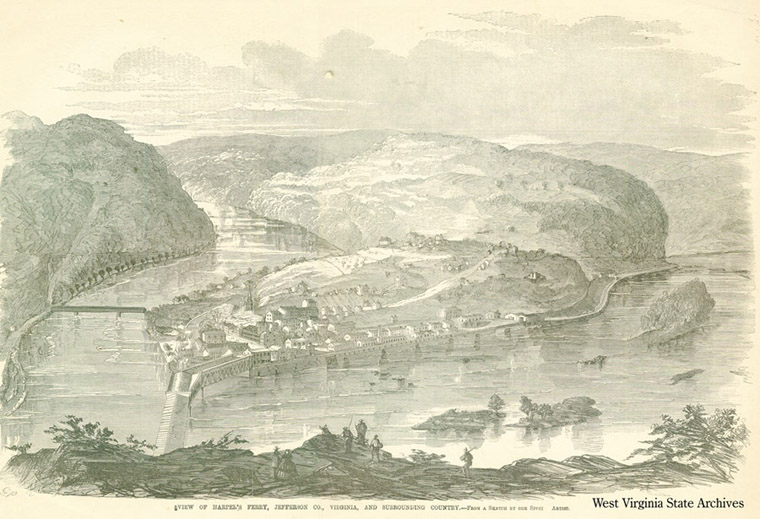
Unless otherwise noted, all images are from the Boyd B. Stutler Collection
At about 8:00 on the evening of October 16, 1859, John Brown and 18 men set out for Harpers Ferry. The remaining 3:Owen Brown, Barclay Coppoc, and Francis Merriam:were assigned to remain at the Kennedy Farm. John Brown made the journey by wagon, while the other men walked behind. About 10:30 p.m., the group arrived at the Maryland end of the covered bridge that crossed the Potomac River at Harpers Ferry. They quickly took control of the bridge, entered the town, and took control of the armory, taking two prisoners in the process. Several raiders proceeded to the Shenandoah River bridge, the arsenal, and the rifle factory to secure those sites.
Around noon, the Jefferson Guards arrived at the Maryland end of the bridge. They forced three raiders to retreat from the bridge and killed Dangerfield Newby, the first of the raiders to die. In the afternoon, citizens stormed the Rifle Works along the Shenandoah, and a militia company from Martinsburg forced John Brown and his men into the armory fire engine house. By nightfall, raiders William Leeman, John Kagi, Stewart Taylor, and William Thompson and townsmen George W. Turner and Fontaine Beckham, the mayor of Harpers Ferry, were dead; Watson Brown, Oliver Brown, and Lewis Leary were dying; and John Copeland was held prisoner. About 11:00 p.m., nearly 100 U.S. Marines arrived from Washington, DC. Accompanying them were Col. Robert E. Lee and his aide Lt. J. E. B. Stuart, who had been sent by President Buchanan to join the Marine force with Lee to assume command.
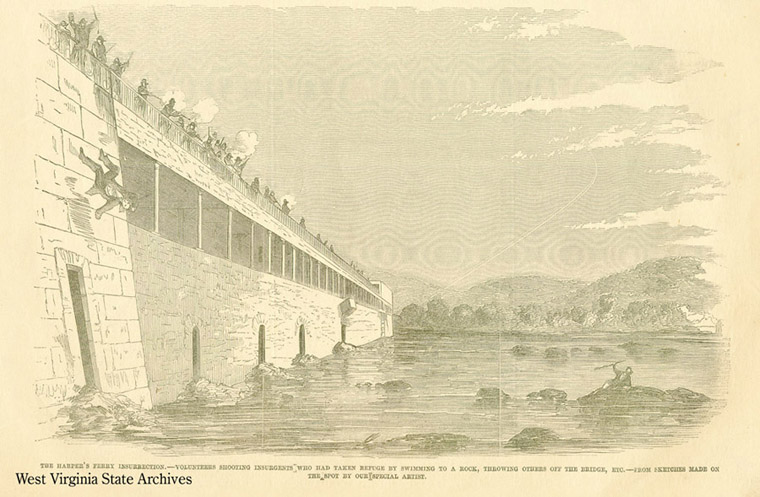 Source: Frank Leslie's Illustrated Newspaper, October 29, 1859, Periodicals Collection |
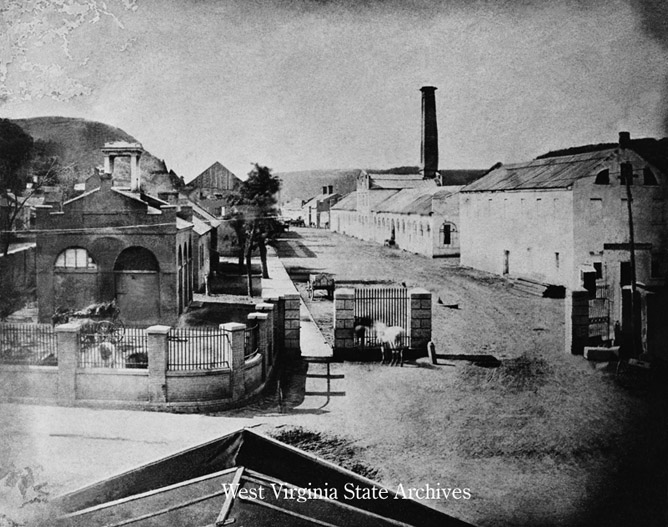 showing the fire engine house at left |
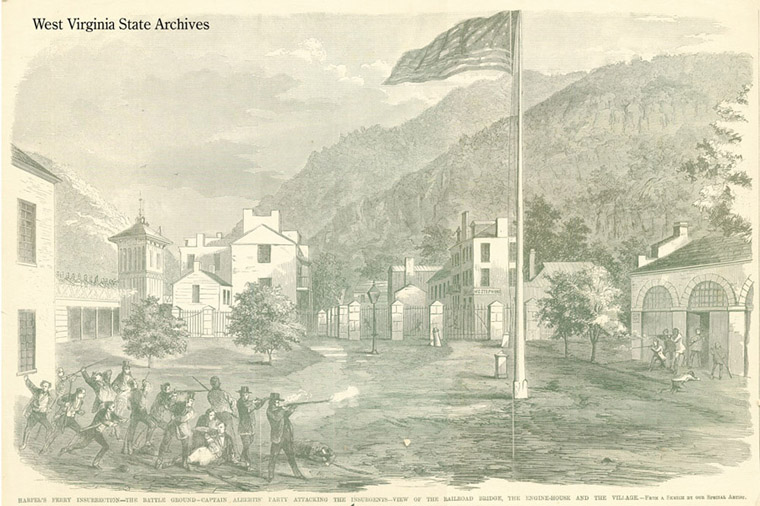 attacking the insurgents. Source: Frank Leslie's Illustrated Newspaper, November 5, 1859, Periodicals Collection |
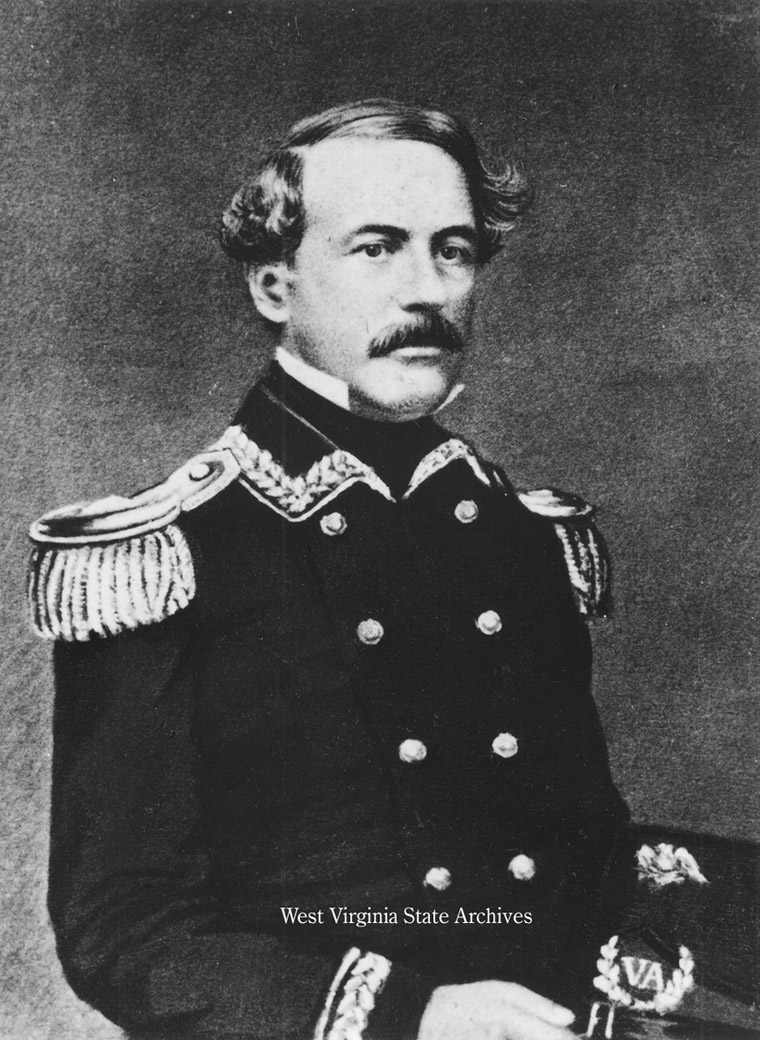 |
On October 18, about 7:00 a.m., Lee demanded that John Brown surrender, but Brown refused. The Marines, led by Lt. Israel Green, stormed the engine house. After battering an opening in the door, they entered the building. Once inside, Green struck Brown and attempted to stab him with his sword, but the dress sword merely bent double, and Green resorted to beating Brown over the head with its hilt. Edwin Coppoc, Shields Green, Aaron Stevens, and Watson Brown were captured with the elder Brown. John Brown's raid was over a day and a half after it began. | 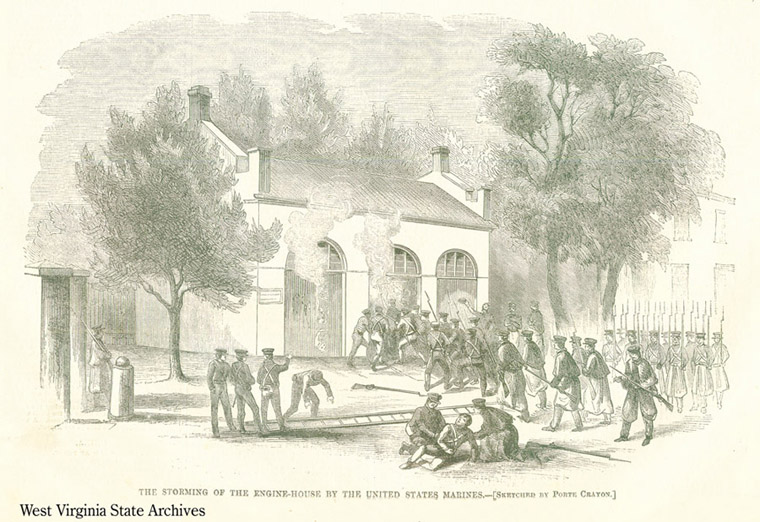 by the U.S. Marines, sketch by Porte Crayon. From Harper's Weekly, November 5, 1859, Boyd B. Stutler Collection |
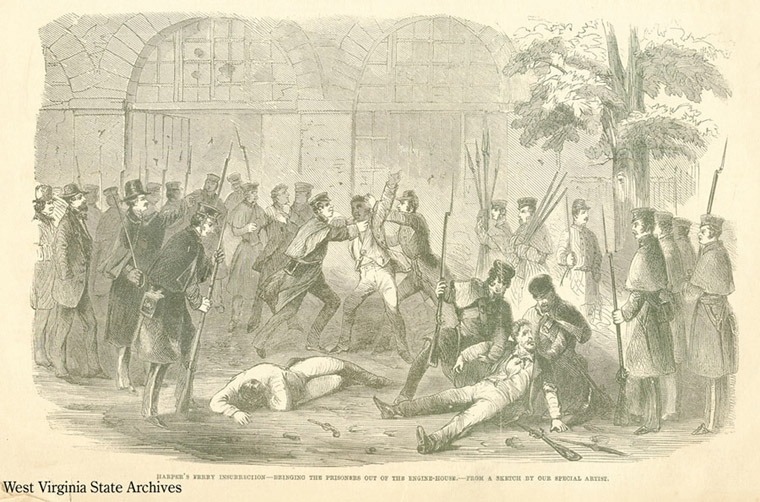 Engine House. Source: Frank Leslie's Illustrated Newspaper, November 5, 1859, Periodicals Collection |
In the storming of the engine house, Pvt. Luke Quinn of the U.S. Marines was killed. Raiders Dauphin Thompson and Jeremiah Anderson also perished during the marine assault. Oliver Brown had died from his wounds during the preceding night; his brother Watson would linger nearly another day before dying. Owen Brown, Barclay Coppoc, and Francis Merriam, who had been stationed in Maryland, as well as John Cook, Osborn Anderson, Albert Hazlett, and Charles Tidd, fled. All but Cook and Hazlett would succeed in escaping. |
Newspaper Sketches of John Brown's Raid
Letter, Joseph Crane to David Hunter Strother, October 25, 1859
Letter, John Brown to J. Q. Anderson, November 29, 1859
Shepherdstown Register Articles on John Brown's Raid
Independent Democrat Articles on John Brown's Raid
Excerpt from The Life, Trial and Execution of John Brown, 1859
Excerpts from Documents appended to Governor Wise's Message
Report of Col. Robert E. Lee (Appendix to Records of the Senate Select Committee)
Testimony of John H. Allstadt to the Senate Select Committee
Testimony of Armistead M. Ball to the Senate Select Committee
Testimony of Terrence Byrne to the Senate Select Committee
Testimony of George W. Chambers to the Senate Select Committee
Testimony of Lind F. Currie to the Senate Select Committee
Testimony of Archibald M. Kitzmiller to the Senate Select Committee
Testimony of John D. Starry to the Senate Select Committee
Testimony of Lewis W. Washington to the Senate Select Committee
Testimony of Daniel Whelan to the Senate Select Committee
Message of Gov. Samuel J. Kirkwood of Iowa, March 3, 1860
Extract from A Voice from Harpers Ferry, by Osborne Perry Anderson
"Owen Brown's Escape from Harper's Ferry," Atlantic Monthly
"The Capture of John Brown," by Israel Green, North American Review
"John Brown at Harpers Ferry: A Contemporary Analysis," by Lawrence F. Barmann, S. J.
(West Virginia History, Vol. 22)
"Re-evaluating John Brown's Raid at Harpers Ferry," by Karen Whitman
(West Virginia History, Vol. 34)
"John Brown's Raid At Harpers Ferry and Governor Henry Alexander Wise's
Letter to President James Buchanan Concerning the Invasion," by Isaiah A. Woodward (West Virginia History, Vol. 42)
